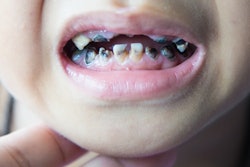Pediatric dentists in the U.S. use pharmacological approaches like silver diamine fluoride to address early caries but rarely adopt other chronic disease management strategies like minimally invasive dentistry despite professional guidance, according to a report.
Obstacles to dentists adopting these strategies include resistance to change, a lack of dental coverage for behavioral risk-reduction services, and a lack of nutrition and behavioral science training, according to a study published on January 2 in Preventing Chronic Disease.
"Except for pharmacologic treatments and despite professional guidelines, CDM (chronic disease management) approaches are underused,” wrote the authors, led by Dr. Burton Edelstein, MPH, of the Columbia University College of Dental Medicine.
Professional guidelines promote chronic disease management, including pharmacological, behavioral, monitoring, and minimally invasive dentistry treatments, that aim to decrease the need for more expensive dental procedures.
To determine the number of U.S. pediatric dentists who have adopted chronic disease management strategies for early childhood caries, a survey that involved 1,639 pediatric dentists, including organizational and academic leaders, was conducted between November 2021 and July 2023. Data, including treatment approaches and time set aside for counseling, were collected, according to the report.
Of the 94% of dentists who reported using one or more chronic disease management strategies, nearly 89% cited pharmacological approaches. For pharmacological strategies, 1,381 clinicians cited the use of silver diamine fluoride and 585 reported the use of fluoride varnish, which were the two approaches cited most frequently, the authors wrote.
Of those who used at least one chronic disease management approach, about 43% reported behavioral, approximately 41% cited monitoring, and about 39% reported minimally invasive dentistry, they wrote.
However, the study had limitations, including the findings may not be generalizable to all pediatric dentists in the U.S. due to sampling methods, the authors wrote.
Nevertheless, chronic disease management strategies, which can be delivered through medical and dental personnel, community health workers, and others, may be key to decreasing early caries inequities across populations, they wrote.
"Conditions presaging greater adoption of CDM that hold promise to reduce disparities in ECC (early childhood caries) include greater adoption of CDM by younger pediatric dentists, high levels of MID (minimally invasive dentistry) adoption by thought leaders, and pressures from health reform that prioritize value over volume and accountability to population health," Edelstein and co-authors wrote.




















